“ANYTHING FER THANKSGIVING?”
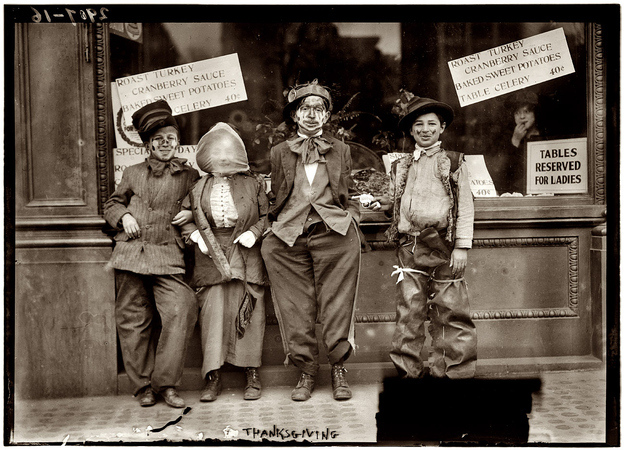
Brownstone Detectives investigates the history of our clients’ homes.
The story you are about to read was composed from research conducted in the course of one of those investigations.
Do you know the history of YOUR house?
********************************************************************************************************************************
Before there was Halloween “trick-or-treating” – there was another tradition in Brooklyn:
Thanksgiving “begging.”
A STORY ABOUT CHILDREN PANHANDLING IN BROOKLYN
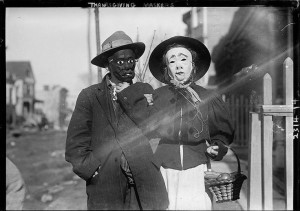 Most people have never heard of this custom, but that is because it ended sometime in the 1940s or 1950s here in the northeastern part of the U.S.
Most people have never heard of this custom, but that is because it ended sometime in the 1940s or 1950s here in the northeastern part of the U.S.
But in the process of doing research on a brownstone for a Brownstone Detectives House History Book, we tracked down a former resident who, during her interview, and to our great surprise, began telling us about this defunct holiday.
“In the morning we were dressed up as hobos, in whatever old clothes our parents gave us,” said Patricia O’Neill who used to live at 738 Macon Street in the eastern section of Bedford-Stuyvesant, “and we went from door to door saying, ‘Anything for Thanksgiving?’
“They used to give us a dime or an apple.”
O’Neill (Loftus at the time) remembers the custom well. Where she grew up in Bedford-Stuyvesant, all of the kids dressed as hobos and they spent the morning of Thanksgiving Day carousing the neighborhood “begging” for food and money from their neighbors.
THE HISTORY
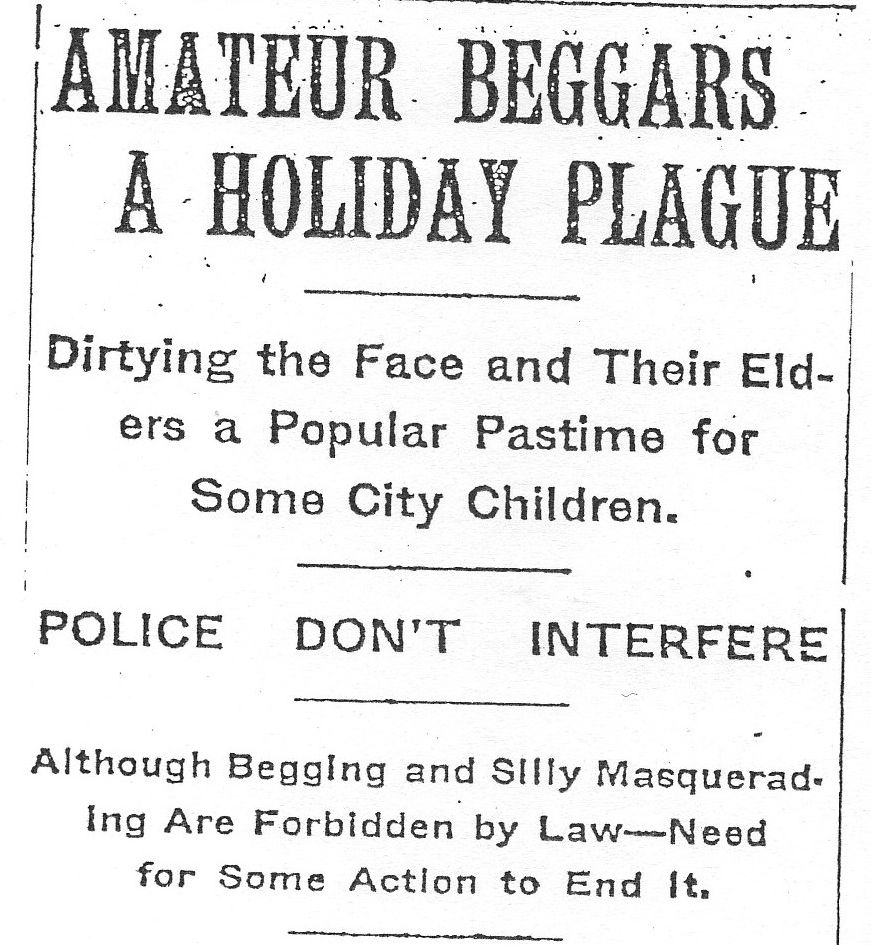
The custom which started around 1870 may have a connection to Martinmas, the feast day of St. Martin of Tours, patron saint of beggars and the poor on 11 November, or St. Catherine’s Day, 25 November, both of which dates are used by many European cultures to signify the end of autumn and the coming of winter.
On either or both days, depending on the country and culture, children would dress up – or down – and go around the town, especially with lanterns on St. Martin’s Day, singing appropriate songs and, in many places, receiving donations of food or money to be brought to the church, or get sweets for themselves. Many countries celebrated with large, festive meals.
So with the large numbers of immigrants flowing into the country like a faucet full on in the late 1800s, it would not be odd that such a tradition caught on here.
In an article in The New York Tribune on 21 November 1909 about the tradition, a Reverend James M. Farrar commented, “Those of you who have always lived in New York do not think of this Thanksgiving game of ragamuffin as a strange custom, but the strangers coming to our city are greatly surprised, and ask what it means.”
ITS WANING DAYS…
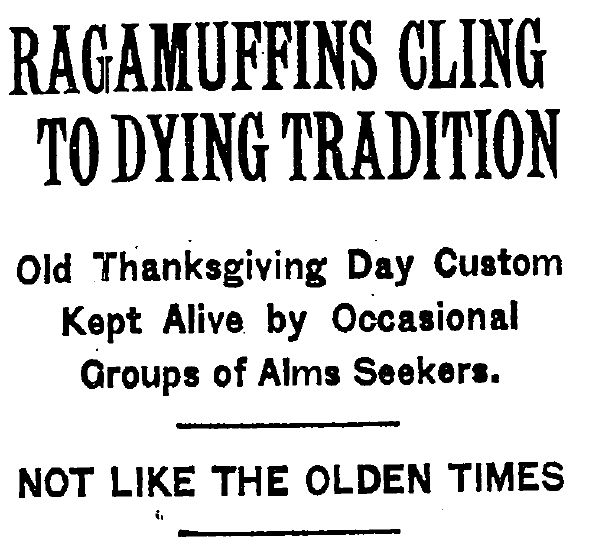 Not everyone liked or supported the idea, but Farrar thought that the tradition of “dressing in old clothes, many sizes too large, painting their faces or putting on masks” was “here to stay.”
Not everyone liked or supported the idea, but Farrar thought that the tradition of “dressing in old clothes, many sizes too large, painting their faces or putting on masks” was “here to stay.”
By 1930, however, articles were appearing in The New York Times calling for the end of the practice. William J. O’Shea, Superintendent of schools at the time, sent a circular to the district superintendents and principals which stated that “modernity is incompatible with the custom of children to masquerade and annoy adults on Thanksgiving Day.”
O’Shea’s plea to end the tradition must have carried some gravitas because that year The New York Times ran a headline that noted that “Parading Thanksgiving Ragamuffins Scarce, Except Out Where City’s Subway Lines End.”
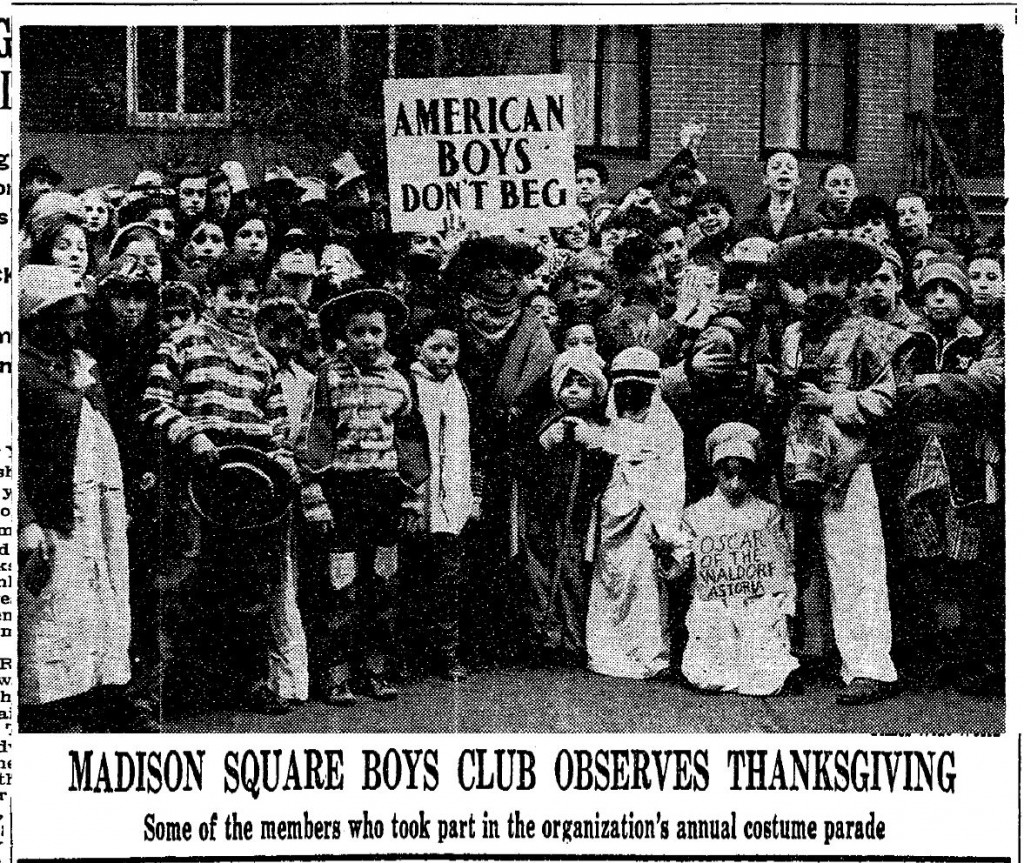
And it was true. The Ragamuffin tradition was much more difficult to quash in the outer boroughs. The Times reported that “in Flatbush, the Bronx, Greenpoint, and other places where the subway lines end, the ragamuffin tradition persists somewhat more tenaciously.”
And one thing was true in Bedford-Stuyvesant – little Patricia Loftus was glad of it. Dressing up in costume was something to look forward to with her friends every year.
On Thanksgiving Day.
———————————————————————————————————————–
 Brownstone Detectives is an historic property research agency. Our mission is to document and save the histories of our clients’ homes. From our research, we produce our celebrated House History Books and House History Reports. Contact us today to begin discovering the history of your home.
Brownstone Detectives is an historic property research agency. Our mission is to document and save the histories of our clients’ homes. From our research, we produce our celebrated House History Books and House History Reports. Contact us today to begin discovering the history of your home.